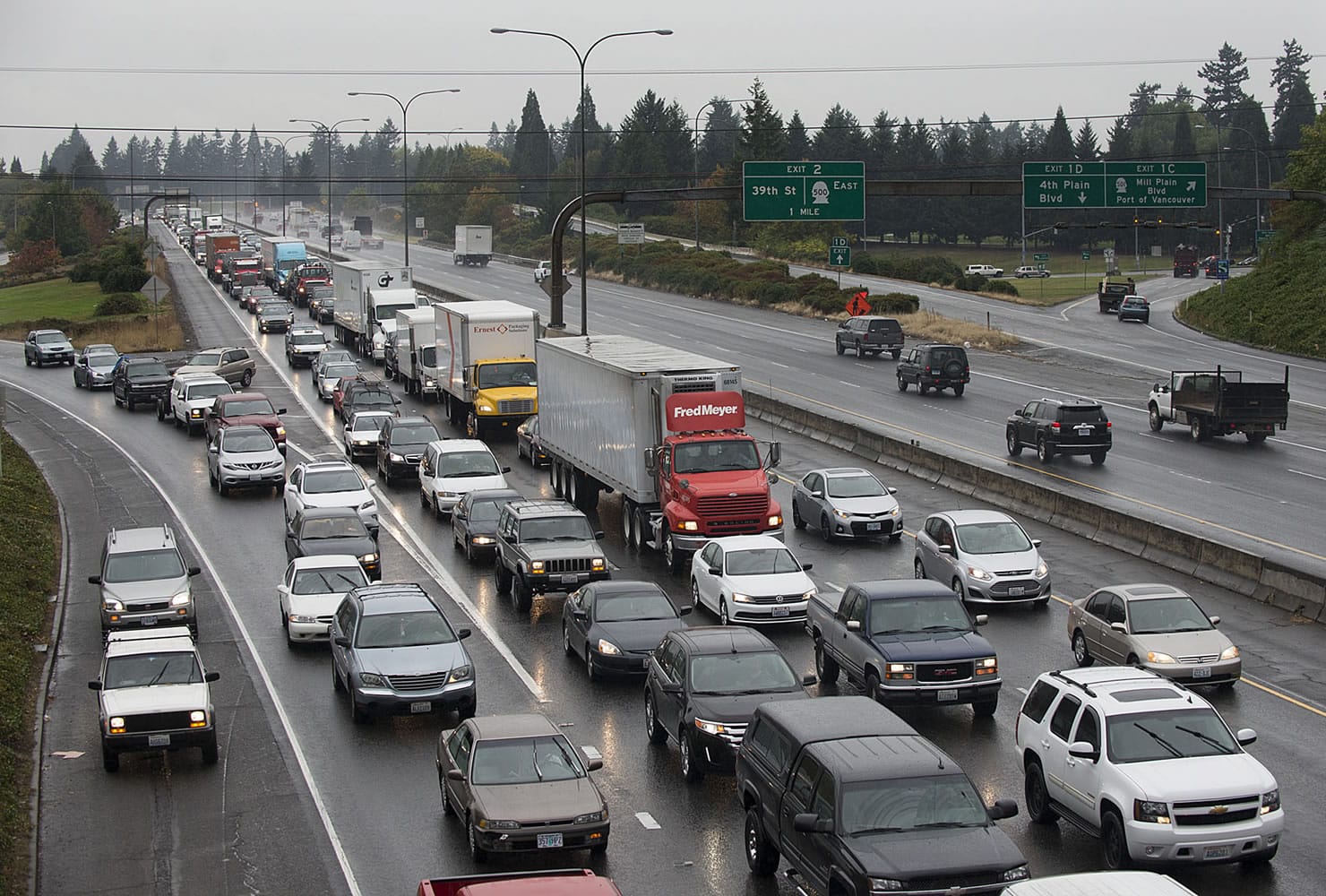File this in the category of news you already knew: Traffic congestion in Clark County is getting worse, according to a new report from the Washington State Department of Transportation.
The report, released Monday, showed that commuters in the region piled up nearly 52,000 hours in delays in 2014 — a 28 percent increase from 2012. Travel times ticked upward on the daily southbound slog out of Clark County. And by at least one measure, the morning commute heading south from Vancouver toward Portland on Interstate 5 was the worst in the state, according to the report.
The results won’t come as a huge surprise to the region’s freeway warriors who see conditions up close every day. Developing a detailed snapshot each year helps transportation partners identify what’s happening and why, said WSDOT spokesman Bart Treece. It also helps officials plan for the future as conditions change and the economy recovers, he said.
“Clearly, the region is growing,” Treece said. “We’re seeing signs of a healthy economy with the traffic patterns.”
To be clear, Clark County still only represents a fraction of Washington’s overall congestion. The Puget Sound region — King, Snohomish, Kitsap and Pierce counties — account for almost 97 percent of statewide delays, according to the report.
Overall, Washington saw more people on the road in 2014, reflected by an increase in vehicle registrations and licensed drivers. Vehicle hours of delay also increased, though annual congestion in the state remained below pre-recession levels, in 2007, according to the report.
In the Vancouver area, total miles traveled and delays both increased last year. Transit accounted for 2.1 million passenger miles traveled in 2014, slightly up from 2 million in 2012, according to the report. Southbound travel times also increased on both I-5 and Interstate 205 during rush hour, according to the report.
“The peak periods are starting earlier, and they’re lasting longer,” Treece said.
And that final stretch of southbound I-5 in Vancouver ranking worst in the state? That’s based on a formula comparing actual travel times to the most efficient speeds, resulting in a metric known as a “maximum throughput travel time index.” No other corridor performed worse in the state by that measure.
One number that dropped slightly in 2014: greenhouse gas emissions, despite worsening congestion in the area. That may be at least partly due to more fuel-efficient vehicles on the state’s roadways, according to the report. It’s also worth noting that emissions don’t substantially increase as vehicle speeds slow, Treece said — but only to a point. Below 12.5 mph, emissions start to increase exponentially, according to WSDOT.
Being on the Oregon border and within a larger urban area, Clark County’s traffic patterns don’t always behave like the rest of the state. Also, local congestion woes have been at least partly attributed to two major container shipping companies withdrawing operations at the Port of Portland earlier this year. The move shifted many goods from marine vessels onto trucks on the region’s freeways.
Traffic counts on the I-5 and I-205 bridges are at or above pre-recession levels. Total crossings of the two spans reached an all-time high in 2014, according to the Southwest Washington Regional Transportation Council.




